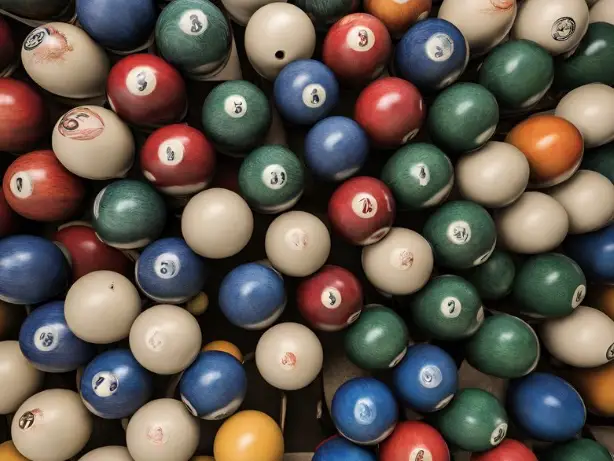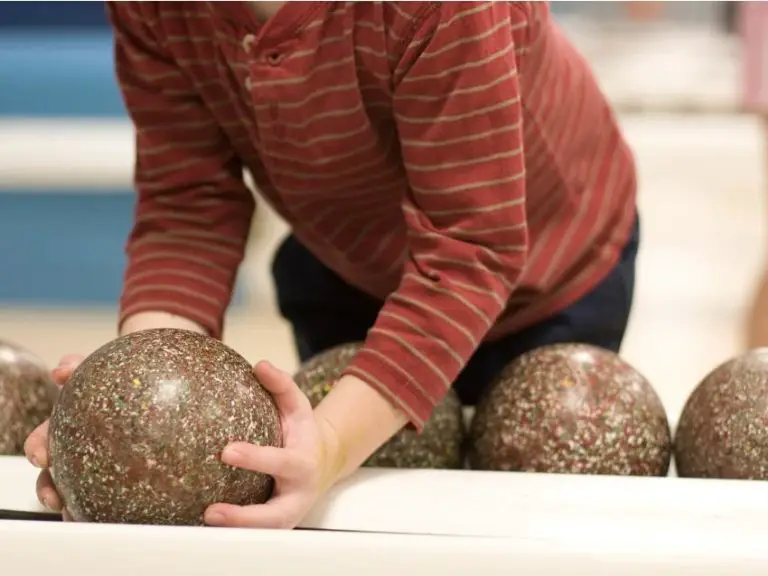How Long Has Duckpin Bowling Been Around: A Brief History
Duckpin bowling is a unique variation of bowling that originated in the United States in the late 19th century. If you’re curious about the history of this fun and challenging sport, you may be wondering how long duckpin bowling has been around.
The exact origins of duckpin bowling are somewhat disputed, but it’s generally agreed that the game was first played in the late 1800s. According to a January 2, 1893 article, “bowling fever” was sweeping the nation, and the article mentioned playing “duck pins” as one of the popular forms of the game. Early documentation of a duckpin bowling tournament in Lowell, Massachusetts was published on May 19, 1894, with game averages ranging from about 73 to about 94.
While duckpin bowling has been around for well over a century, it’s not as widely known or played as traditional ten-pin bowling. However, it has a dedicated following in certain regions of the United States, particularly in the Northeast. If you’re interested in learning more about this unique and challenging sport, read on to discover the history and evolution of duckpin bowling.
Origins and Early History
Duckpin bowling has been around for over a century, with its origins dating back to the early 1900s in the Northeastern United States. The sport was first played in Baltimore, Maryland, and quickly gained popularity throughout the region.
Baltimore: The Birthplace of Duckpin
According to the most popular theory, duckpin bowling was invented in Baltimore in 1900 by two bowling alley owners, John Van Sant and Bill Clarke. They wanted to create a game that was more challenging than traditional ten-pin bowling but still accessible to everyone. They came up with the idea of using smaller pins and balls, which required more skill and precision to knock down.
The name “duckpin” is said to have come from the shape of the pins, which resemble ducks. The game quickly caught on in Baltimore, and soon spread to other cities in the Northeastern United States.
Key Figures: John McGraw and Wilbert Robinson
Two key figures in the early history of duckpin bowling were John McGraw and Wilbert Robinson. McGraw was a famous baseball player and manager who owned several duckpin bowling alleys in the Baltimore area. He was instrumental in popularizing the sport and bringing it to a wider audience.
Robinson, another baseball player and manager, also owned several duckpin bowling alleys in the region. He was known for his love of the game and his efforts to promote it to a wider audience.
Together, McGraw and Robinson helped to establish duckpin bowling as a popular pastime in the Northeastern United States. Today, the sport is still played in several states, including Connecticut and Massachusetts, and has a dedicated following of enthusiasts who appreciate its unique challenges and rich history.
Rules and Gameplay
Scoring System
Duckpin bowling is played with a unique scoring system. Each game consists of ten frames. In each frame, you have three rolls to knock down as many pins as possible. You earn one point for each pin that you knock down. If you knock down all ten pins on your third roll, you earn a maximum of 30 points for that frame. The total score for the game is the sum of the points earned in each frame.
Equipment and Lane Specifications
The equipment used in duckpin bowling is different from that used in ten-pin bowling. The pins are shorter, squatter, and lighter, and the ball is smaller and lighter as well. The duckpin balls are 4 + 3/4 in (12 cm) to 5 in (12.7 cm) in diameter, weigh 3 lb 6 oz (1.5 kg) to 3 lb 12 oz (1.7 kg) each, and lack finger holes. The pins are arranged in a triangle, and the bowler must knock down all ten pins to score a strike.
The dimensions of a duckpin bowling lane are also slightly different from those of a ten-pin bowling lane. Duckpin lanes are typically around 60 feet (18 meters) long, while ten-pin lanes measure about 60 to 62 feet (18 to 19 meters) in length. The width of the lanes is also slightly narrower in duckpin bowling. The gutter size is 1.75 inches (4.45 cm), which is wider than the gutter in ten-pin bowling.
The pinsetter in duckpin bowling is different from that in ten-pin bowling. In duckpin bowling, the pins are manually set by a pinsetter, whereas in ten-pin bowling, the pins are automatically set by a machine. The bowler must wait until the pins are reset before rolling the ball again.
In conclusion, duckpin bowling has a unique scoring system and equipment specifications. The game is played on a slightly smaller lane with shorter, squatter, and lighter pins and balls. The pinsetter is manual, and the bowler has three rolls per frame to knock down as many pins as possible.
Evolution and Popularity
Duckpin bowling has been around for over a century, with its origins dating back to the late 1800s. The game has evolved over time, with changes in rules, equipment, and popularity.
The Growth of Duckpin Bowling
Duckpin bowling gained popularity in the East Coast and New England regions of the United States during the early 1900s. It was a popular pastime for many people, including the Baltimore Orioles baseball team, who were known to play duckpin bowling during their off-season.
The National Duckpin Bowling Congress was founded in 1927 to establish rules and regulations for the game, as well as to promote it. The organization has since grown to include over 10,000 members across the United States and Canada.
During the mid-1900s, duckpin bowling saw a surge in popularity, with many new alleys opening up across the country. Leagues and tournaments were formed, and the Women’s National Duckpin Association was established in 1949.
Decline and Current State
However, the popularity of duckpin bowling began to decline during the latter half of the 20th century. Many alleys closed, and fewer people were interested in playing the game. Today, duckpin bowling is not as popular as it once was, but it still has a dedicated following.
Despite its decline, there are still many leagues and tournaments held across the country, and some alleys are still in operation. Duckpin bowling continues to be a unique and enjoyable alternative to traditional ten-pin bowling, with its smaller balls and pins providing a different challenge for players.
Duckpin Bowling Today
Duckpin bowling has been around for over a century and continues to be a popular pastime for many people. Today, it is played in several states across the United States, including Newington, Conn., where it was first invented.
Modern Tournaments and Leagues
Duckpin bowling tournaments and leagues are still held regularly, with many players competing for cash prizes and bragging rights. The National Duckpin Bowling Congress (NDBC) is the governing body for duckpin bowling in the United States and oversees many of the tournaments and leagues held throughout the year.
Cultural Impact and Niche Appeal
While duckpin bowling may not be as popular as other forms of bowling, it has a strong following among those who enjoy the challenge of the game and the fast gameplay. It is also accessible to kids and large groups, making it a fun activity for families and friends.
In recent years, duckpin bowling has gained a niche appeal, with many bowling centers and arcades offering it as an alternative to traditional ten-pin bowling. According to the Boston Globe, Amy Bisson Sykes, a duckpin bowler and enthusiast, has been instrumental in promoting the sport and helping it gain more widespread recognition.
Overall, duckpin bowling remains a fun and challenging activity for those who enjoy competition and want to try something new. Its unique gameplay and cultural impact make it a beloved pastime for many people.





